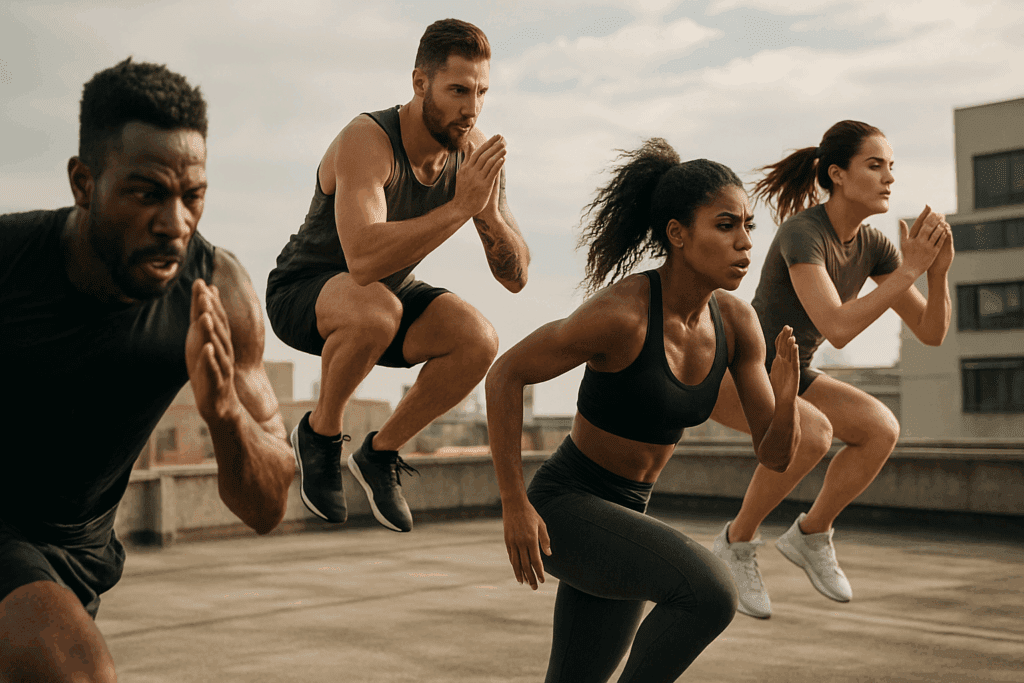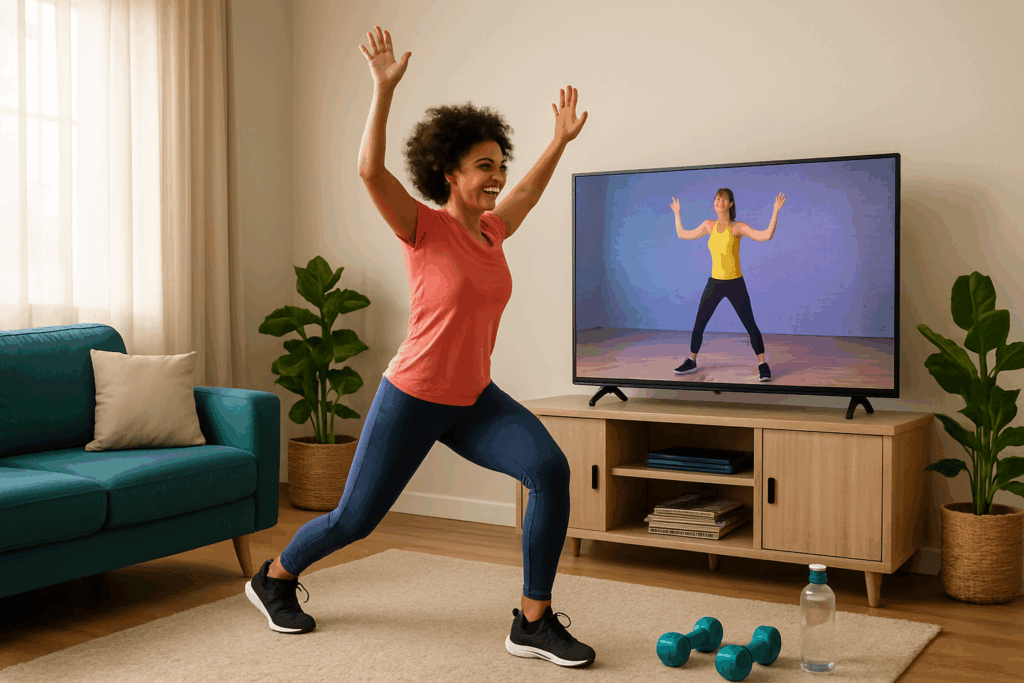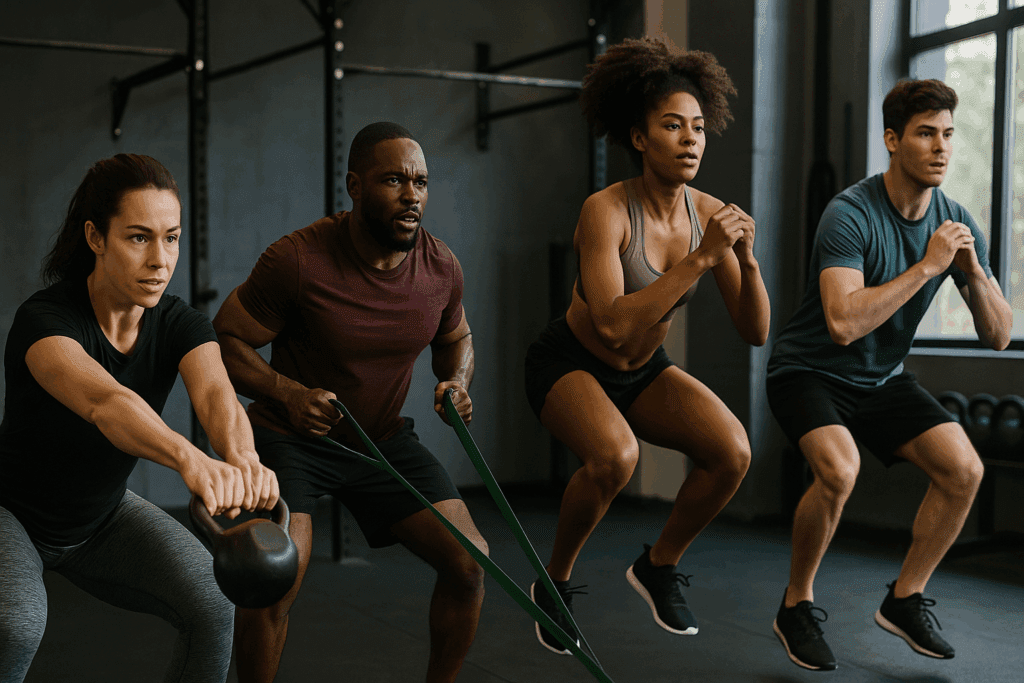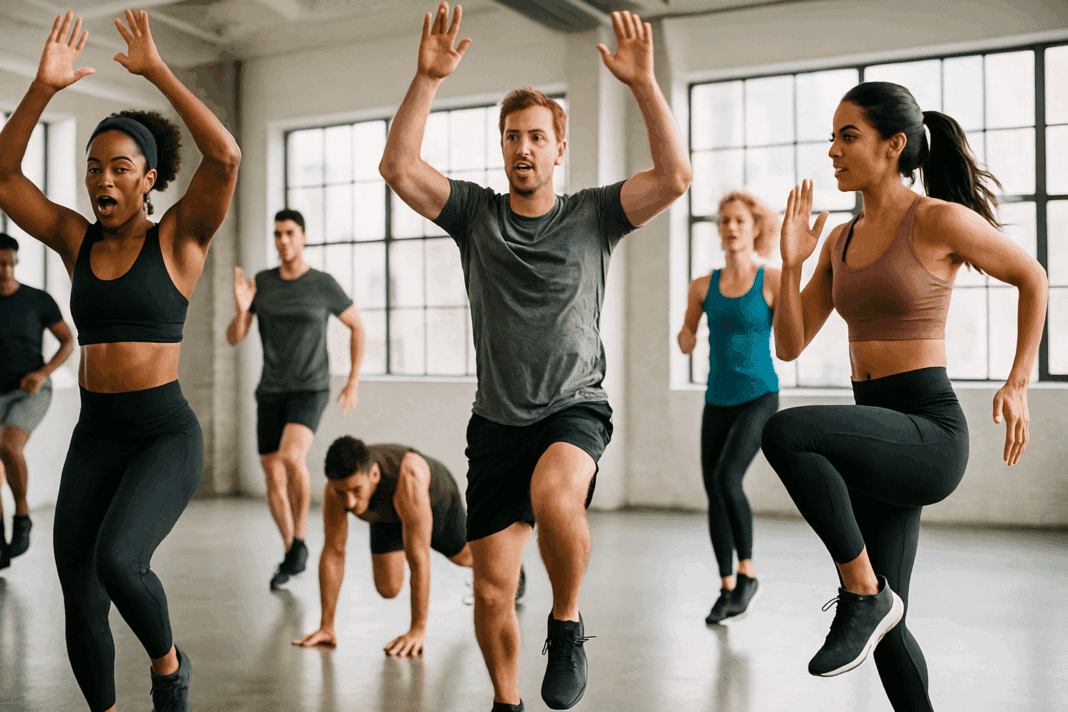Introduction: Why Cardio Matters for Performance and Endurance
Cardiovascular fitness is the bedrock of athletic performance and long-term health, yet it is often overshadowed by strength training and bodybuilding in many fitness discussions. However, the heart and lungs are foundational to the body’s ability to sustain effort, whether on the playing field, in the gym, or in everyday life. When the cardiovascular system functions efficiently, it enables more oxygen to reach working muscles, thereby increasing stamina and reducing fatigue. This becomes particularly critical for those pursuing performance enhancement and endurance training, as the body must not only be strong but also capable of sustaining effort over time.
You may also like: How to Increase Stamina and Endurance Naturally: Smart Training Tips and Nutrition Habits That Support Cardiovascular Fitness
Modern cardio practices have evolved far beyond monotonous treadmill jogs or endless laps around the track. Today, high-intensity routines such as HIIT and cardio circuits, alongside full body aerobic workouts, have revolutionized how we approach endurance training. These methods offer dynamic and engaging ways to challenge the cardiovascular system while also promoting muscle tone, mobility, and fat loss. The growing popularity of 30 minute cardio workout formats is no coincidence; these time-efficient routines cater to busy schedules while still delivering impressive physical returns. Whether performed at home or in a gym, a complete cardio workout can be the missing link in a comprehensive fitness plan.

The Science Behind Full Body Cardio Workouts
To understand the benefits of a full body cardio workout, one must first grasp how cardiovascular training impacts the body on a physiological level. During cardio, the heart rate increases, prompting more oxygen to circulate through the bloodstream. This oxygen feeds working muscles, allowing them to perform prolonged contractions without fatigue. Over time, regular cardio leads to adaptations such as lower resting heart rate, increased stroke volume, and improved VO2 max, all of which contribute to enhanced endurance.
What distinguishes full body cardio workouts from localized routines is their emphasis on recruiting multiple muscle groups simultaneously. This holistic approach not only burns more calories but also trains the body to work as a coordinated system. For instance, combining lower-body exercises like squats and lunges with upper-body movements such as push-ups or punches elevates the heart rate more effectively than isolated efforts. These workouts double as both strength and cardiovascular training, making them invaluable for those aiming to optimize performance across multiple domains.
Moreover, full body aerobic workouts help improve proprioception, coordination, and agility. Engaging the entire body challenges balance and neural control, which are crucial for athletic performance. Research has shown that such integrative training methods stimulate both slow-twitch and fast-twitch muscle fibers, resulting in greater muscular endurance and power. This duality explains why many elite athletes incorporate full cardio workout routines into their training regimens.

The Role of HIIT and Cardio in Enhancing Athletic Output
High-Intensity Interval Training, or HIIT, has become a staple in performance-based training programs due to its ability to mimic the energy demands of real-world sports scenarios. Unlike steady-state cardio, which maintains a consistent pace, HIIT and cardio routines alternate between short bursts of intense activity and periods of lower-intensity recovery. This pattern conditions the body to recover faster, manage lactic acid buildup, and sustain higher efforts for longer durations.
The beauty of HIIT lies in its adaptability. It can be applied to nearly any modality—running, cycling, bodyweight exercises, or even resistance training—making it one of the most versatile tools in an athlete’s arsenal. When incorporated into a full body cardio workout, HIIT intensifies the metabolic demand, resulting in greater calorie burn and improved cardiovascular resilience. A 30 minute cardiovascular workout that includes HIIT intervals can offer the same benefits as a much longer steady-state session, thanks to its metabolic efficiency.
Furthermore, HIIT triggers excess post-exercise oxygen consumption (EPOC), which means the body continues burning calories long after the workout has ended. For athletes and fitness enthusiasts aiming to optimize body composition without sacrificing performance, this is a game-changer. The integration of HIIT and cardio into regular routines can yield measurable improvements in speed, agility, and muscular endurance, especially when paired with full body movements that challenge multiple planes of motion.

Designing the Ideal 30 Minute Cardio Workout at Home
Creating an effective 30 minute cardio workout at home requires careful consideration of space, equipment availability, and personal fitness levels. Fortunately, the rise of digital platforms and cardio workout videos has made it easier than ever to access professional-level guidance without stepping foot in a gym. These programs often include progressive routines that can be scaled to accommodate both beginners and advanced athletes, ensuring continued progress over time.
An ideal home-based cardio routine should begin with a dynamic warm-up that gradually elevates the heart rate and prepares the joints for movement. This could include bodyweight squats, arm circles, and leg swings. Following this, the workout might alternate between aerobic segments and strength-based intervals to maintain intensity and variety. For example, 45 seconds of jumping jacks or high knees could be paired with 30 seconds of bodyweight push-ups, followed by a brief rest.
Such a structure not only keeps the heart rate elevated throughout the session but also ensures that each major muscle group is engaged. Incorporating exercises that mimic real-life movements—like burpees, mountain climbers, and bear crawls—adds functional value to the workout. A full cardio workout should leave the participant feeling both challenged and invigorated, with noticeable improvements in endurance and mood after just a few weeks of consistent practice.

Cardio Fitness Videos and the Evolution of At-Home Training
The digital age has brought about a surge in the popularity of cardio fitness videos, providing individuals with the tools to maintain an active lifestyle regardless of location or schedule. These videos range from beginner tutorials to advanced HIIT challenges, often led by certified trainers who guide participants through complete cardio workouts in real time. The accessibility of these resources has broken down many traditional barriers to fitness, such as cost, convenience, and intimidation.
Cardio training videos offer more than just instruction; they also provide motivation, structure, and a sense of community. Users can follow along with routines that have been carefully designed to deliver results, often using only bodyweight or minimal equipment. The visual and auditory cues enhance engagement and reduce the mental fatigue associated with self-directed workouts. As a result, more people are finding success in sticking with consistent cardio routines.
Additionally, these resources cater to diverse fitness goals. Whether the aim is to build a lean cardio body, increase aerobic capacity, or supplement a strength program, there is a cardio video tailored to each need. Many platforms also offer filtering options to sort by duration, intensity, or focus area, making it easier to find a full body cardio workout that aligns with personal preferences. The convenience of pressing play and following along has transformed how people approach fitness from the comfort of their own homes.
The Benefits of a 30 Minute Aerobic Workout for Long-Term Health
A well-structured 30 minute aerobic workout delivers numerous long-term health benefits that go beyond immediate performance gains. Regular aerobic activity strengthens the heart muscle, lowers blood pressure, and improves cholesterol levels—all of which contribute to a reduced risk of cardiovascular disease. Furthermore, aerobic exercise has been shown to enhance insulin sensitivity, making it a powerful tool in the prevention and management of type 2 diabetes.
Beyond the physical benefits, aerobic workouts also offer mental health advantages. The rhythmic, repetitive nature of cardio activity triggers the release of endorphins, leading to improved mood and reduced symptoms of anxiety and depression. For many, a 30 minute cardio workout at home becomes a therapeutic ritual that helps manage daily stress and boost overall well-being.
Incorporating full body aerobic workouts into one’s routine ensures a balanced approach to fitness. These sessions engage both upper and lower body muscles while keeping the heart rate elevated, which promotes efficient calorie expenditure and supports weight management. Over time, the cumulative effects of regular aerobic training can result in increased energy levels, improved sleep quality, and a greater capacity for physical and mental exertion. The key lies in consistency and gradual progression to avoid burnout or injury.

Combining Full Body Cardio and Strength for Maximum Impact
While traditional cardio focuses on heart and lung capacity, integrating strength training into full body cardio sessions amplifies results and fosters a more resilient physique. This hybrid approach is particularly useful for athletes who need both muscular power and aerobic endurance. Exercises such as kettlebell swings, resistance band rows, and squat jumps blur the lines between cardio and resistance, delivering metabolic and muscular challenges in tandem.
The synergy between strength and endurance is essential for optimizing functional performance. For instance, a sprinter not only requires explosive power but also the stamina to repeat efforts with minimal decline in performance. A 30 minute cardio workout that incorporates strength elements builds this capacity efficiently. It also promotes muscular symmetry and joint stability, which are critical for injury prevention.
One of the key advantages of combining strength and cardio is the ability to manipulate training variables such as tempo, load, and rest periods. Shorter rest intervals can keep the heart rate elevated, while heavier resistance builds neuromuscular coordination. This flexible format ensures that each session can be tailored to individual goals, whether the focus is fat loss, speed development, or general fitness. The result is a complete cardio workout that enhances every aspect of physical performance.

How to Structure a Complete Cardio Workout for Daily Consistency
Designing a complete cardio workout that is both effective and sustainable requires thoughtful planning. The first consideration is variety—rotating between different movement patterns and intensities helps prevent plateaus and keeps motivation high. Including options such as cycling, jump rope, or plyometric drills adds excitement and challenges different energy systems.
Another important element is progression. Over time, the body adapts to training stimuli, so gradually increasing the duration, complexity, or intensity of workouts is essential for continued improvement. For example, what begins as a 30 minute aerobic workout might evolve into a more advanced session incorporating interval runs or weighted movements. Tracking performance metrics such as heart rate response or perceived exertion can guide these adjustments.
Daily consistency is more attainable when workouts are enjoyable and achievable. Setting realistic goals, scheduling sessions in advance, and leveraging tools like cardio fitness videos can help establish a routine that fits seamlessly into one’s lifestyle. It’s also important to balance high-intensity days with active recovery or low-impact cardio to support recovery and avoid overtraining. This holistic approach ensures long-term adherence and lasting results.
Frequently Asked Questions: Full Body Cardio Workouts for Performance and Endurance
1. How can I track progress with a full body cardio workout without relying on weight loss alone?
Tracking progress with a full body cardio workout involves more than watching the number on the scale. Instead, consider measuring your improvements in cardiovascular endurance, such as how long you can maintain high-intensity intervals without fatigue or how quickly your heart rate returns to baseline post-exercise. Additionally, note changes in agility, speed, and overall energy levels throughout the day. Cardio fitness videos often include benchmark routines or challenges that you can revisit monthly to assess performance changes. Using a combination of heart rate monitors, wearable trackers, and physical milestones like completing a more advanced cardio video can give you a fuller picture of your development.
2. Are there cognitive benefits to combining HIIT and cardio in a routine?
Yes, the combination of HIIT and cardio offers more than just physical advantages. Emerging research in exercise neuroscience suggests that this training format enhances executive function, working memory, and decision-making under stress. The fast-paced, variable structure of HIIT within a full body cardio workout encourages the brain to adapt quickly to shifting movement patterns and timing. When paired with aerobic conditioning, this approach boosts neuroplasticity and helps combat mental fatigue. Consistently performing a 30 minute cardiovascular workout that incorporates cognitive demand can support long-term brain health, particularly in aging populations or those experiencing high-stress lifestyles.
3. What role does breathing technique play in a full body aerobic workout?
Breathing efficiently during a full body aerobic workout can greatly impact endurance and performance. Deep diaphragmatic breathing helps optimize oxygen uptake and carbon dioxide release, supporting sustained muscular function during a 30 minute cardio workout. Improper or shallow breathing, on the other hand, can lead to early fatigue and dizziness. Many advanced cardio training videos now emphasize breath control, especially in high-intensity sequences. By syncing breath with movement—inhaling during preparatory phases and exhaling during exertion—participants can enhance cardiovascular output and focus, especially in high-repetition routines or when training in hypoxic environments.
4. Can full cardio workouts support active recovery on rest days?
Absolutely. A full cardio workout doesn’t always have to be high-intensity; it can be scaled down for recovery purposes. On lighter days, switching to a low-impact, steady-state 30 minute aerobic workout can promote circulation, reduce muscle soreness, and help flush out metabolic waste from previous high-effort sessions. Cardio fitness videos that focus on low-impact movements like walking, gentle cycling, or mobility-focused routines are excellent tools for active recovery. This approach maintains momentum and keeps the cardio body engaged without causing further strain or risking overtraining.
5. How can cardio training videos be customized for different fitness goals?
Cardio training videos are incredibly adaptable. If your goal is fat loss, choosing HIIT and cardio routines with high repetition and minimal rest will boost calorie burn. For endurance enhancement, opt for a full body aerobic workout with steady-state pacing and longer duration. To build muscular definition, seek cardio workout videos that include resistance bands or bodyweight strength intervals. Many platforms now offer modular routines that can be combined for a customized complete cardio workout. Personalizing your program ensures that your 30 minute cardio workout at home aligns with your evolving goals, whether they focus on speed, power, stamina, or metabolic health.
6. Are there long-term metabolic advantages to full body cardio versus isolated cardio routines?
Yes, a full body cardio workout engages more muscle groups simultaneously, which significantly increases the body’s demand for energy both during and after exercise. This heightened metabolic activity supports better insulin sensitivity, improved hormone regulation, and prolonged fat oxidation. A consistent routine of 30 minute cardio workouts at home that targets the whole body has been associated with increased basal metabolic rate (BMR), even at rest. Compared to isolated routines that may only target the lower body, full body cardio yields more sustained benefits for those looking to maintain a lean physique while preserving energy efficiency. The diversity of movement patterns in a full cardio workout also reduces the risk of overuse injuries and muscular imbalances.
7. How does the concept of ‘cardio body’ differ from traditional strength-focused physiques?
A “cardio body” often refers to a physique developed through high-repetition, endurance-driven training rather than heavy resistance-based hypertrophy. While it may not boast maximal muscle mass, this type of build is characterized by defined, lean muscle with high energy efficiency and excellent cardiovascular health. Individuals who engage in consistent full body aerobic workouts or follow daily 30 minute cardio workouts tend to display excellent recovery capabilities, joint mobility, and neuromuscular coordination. Unlike traditional bodybuilding, which emphasizes isolated muscle group fatigue, cardio training videos promote total-body synergy, fostering durability over sheer size. The result is a functional, agile, and metabolically active body primed for performance across multiple disciplines.
8. How can I maintain motivation for daily 30 minute cardio workouts at home?
Sustaining motivation for a 30 minute cardio workout at home requires intentional habit-building and variety. One approach is to rotate between different cardio workout videos, incorporating elements like music, themed routines, or guest instructors to keep the experience fresh. Setting performance-based goals, such as completing a more advanced full cardio workout without modifications, can provide tangible milestones. Many platforms also offer social features, such as community boards or challenges, to foster accountability. Finally, creating a dedicated workout space and scheduling your full body cardio session like any other important meeting can anchor the habit and reduce mental resistance.
9. What is the impact of environmental conditions on full body aerobic workouts?
Environmental factors such as temperature, humidity, and altitude can significantly influence the effectiveness and safety of full body aerobic workouts. High humidity or heat increases sweat loss and cardiovascular strain, which may affect your ability to sustain a 30 minute cardiovascular workout at peak intensity. In contrast, cooler environments may delay fatigue and enhance aerobic capacity. Training in varied settings can also build environmental resilience—for instance, athletes often use altitude training to increase red blood cell production, enhancing oxygen delivery. When following cardio fitness videos outdoors, it’s important to adjust pacing, hydration, and recovery strategies to match environmental demands.
10. Can full cardio workouts enhance emotional resilience and psychological well-being?
Indeed, full cardio workouts have been linked to increased emotional resilience due to their effect on neurotransmitters like dopamine, serotonin, and endorphins. Regular engagement in a 30 minute cardio workout stimulates regions of the brain associated with reward, motivation, and stress regulation. This chemical shift can foster a sense of accomplishment, sharpen focus, and reduce anxiety symptoms over time. Additionally, immersive cardio video routines that encourage rhythmic movement and breathing can induce a meditative state, enhancing mental clarity and mood. The combination of physiological stimulation and psychological release makes HIIT and cardio not just a tool for physical fitness, but also for cultivating mental toughness and emotional balance.
Conclusion: Building a Stronger, More Resilient Cardio Body Through Smart Training
The journey to improved endurance and peak performance is not marked by singular effort but by the accumulation of smart, consistent choices. A complete cardio workout that engages the full body offers a practical and powerful way to train both the cardiovascular system and musculoskeletal framework. Through a thoughtful blend of HIIT and cardio, functional strength, and aerobic conditioning, individuals can sculpt a physique that is not only aesthetically pleasing but also functionally superior.
A 30 minute cardio workout at home or in the gym can serve as the cornerstone of this transformation, delivering results that extend far beyond the mirror. The evolution of cardio training—spurred by innovations in cardio training videos and online programs—has made fitness more accessible and personalized than ever before. Whether you prefer a structured cardio video, a self-guided full body cardio workout, or a blend of both, the tools for success are within reach.
Ultimately, embracing full body aerobic workouts and integrating them into your routine is a commitment to better health, increased energy, and lifelong performance enhancement. The human body is capable of remarkable adaptation when given the right stimulus. By training intelligently and consistently, anyone can unlock the full potential of their cardio body and enjoy the many benefits that come with cardiovascular vitality.
Was this article helpful? Don’t let it stop with you. Share it right now with someone who needs to see it—whether it’s a friend, a colleague, or your whole network. And if staying ahead on this topic matters to you, subscribe to this publication for the most up-to-date information. You’ll get the latest insights delivered straight to you—no searching, no missing out.
Further Reading:
3 Kinds of Exercise That Boost Heart Health
What’s the Difference Between Endurance and Stamina?
20 cardio exercises to do at home with minimal equipment, from beginner to advanced

